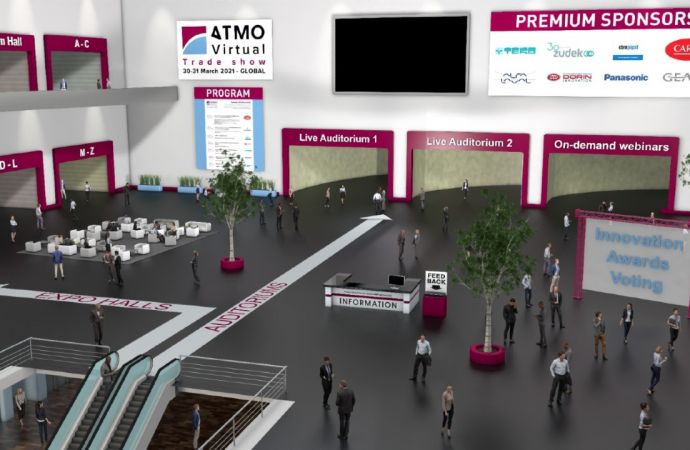A range of challenging and interesting papers was presented at the 5th IIR Conference Ammonia Refrigeration Technology conference. Participants heard about ammonia use in China, India, the Balkans, Switzerland and Canada. Also presented were some of the challenges faced by the ammonia refrigeration sector as well as research into new components. ammonia21.com spoke to Professor Risto Ciconkov about the conference and reports on a first selection of the papers presented.

Professor Risto Ciconkov, president of the organising committee of the Ammonia Refrigeration Technology International Conference, welcomed participants to the biennial event that covered a range of topics such as the design of modern ammonia systems and technological innovation, and technical and safety standards.
In this second article about the event, ammonia21.com looks at the papers presented by Jan Boone from Mayekawa, Lambert Kuijpers from Eindhoven Technical University, René van Gerwen from Unilever, and Pega Hrjnak from the University of Illinois. Also, in an exclusive ammonia21.com video interview, Professor Ciconkov talks about the success of the conference over the years.
Ammonia chillers in different industrial plants in Switzerland, Jan Boone
In this second article about the event, ammonia21.com looks at the papers presented by Jan Boone from Mayekawa, Lambert Kuijpers from Eindhoven Technical University, René van Gerwen from Unilever, and Pega Hrjnak from the University of Illinois. Also, in an exclusive ammonia21.com video interview, Professor Ciconkov talks about the success of the conference over the years.
Ammonia chillers in different industrial plants in Switzerland, Jan Boone
Jan Boone’s presentation looked at the use of natural refrigerant three chiller plants in Switzerland. The first plant is an NH3-chiller designed to produce 367 kW chilled ethylene glycol/water at -2/-6°C with an evaporating temperature of -9°C. The plant started in the fruit-season 2012 and operated approx. 3716 hrs at an overall COP of 4 to 5. The second plant uses two piston compressors to produce 500kW chilled water at 6°C and 350kW glycol-water at -3°C. It is installed in a coldstore and has operated approximately 18,000 hours at an overall COP of 3-4.5. Plant 3 uses piston compressors to produce 250kW cooling in a fruit cold storage plant with ethylene glycol at -7°C by using combined plate in shell evaporators.
DX ammonia evaporators flow regimes and heat transfer, Pega Hrnjak
The paper presented by Pega Hrnjak discussed the heat transfer and pressure drop in evaporation in ammonia. In several videos Pega presented an evaporator with partially transparent tubes that enable the visualisation of flow regimes, allowing the estimation of the void fraction to be done in real application with oil present in the system. The flow regime visualisation indicated that the flow is characterised by very high void fraction. This in turn indicates that any mechanism that would spread liquid to the walls would be extremely beneficial.
Past, present and future of ammonia as refrigerant: an FMCG end-user perspective, René van Gerwen
Unilever, one of the largest, fast moving consumer goods companies (FMCG) in the world, strongly encourages the use of natural refrigerants, with ammonia the preferred refrigerant in its manufacturing facilities. In his paper and presentation René van Gerwen discussed the management of refrigeration throughout the entire life cycle, looking at the ‘5C’ value drivers, as defined and used in Unilever:
- Core: standardisation of the design process. To this aim Unilever has developed the following four-level structure: process description, technology block flow diagrams, process flow diagrams, technology piping and instrumentation diagrams, and equipment specification documents.
- Carbon: sustainability and related operating costs. Through its ‘Sustainable Living Plan’ sustainability has become an intrinsic element of Unilever’s company strategy. As part of this strategy many economically feasible, sustainability improvements for industrial ammonia refrigeration have been identified.
- Cash: required capital. In any end-user company the cash flow is a critical performance indicator. Two major tracks are identified for further driving capital investment reduction in global FMCG companies: partnerships and competitive sourcing.
- Capability: required skills and competencies. In ammonia refrigeration, skills and competences are critical in view of safety and reliability, making ‘Capabilities’ a critical value driver. A future trend towards globally aligned formal skills and competence requirements would be highly desirable to ensure end-users can assess the actual level of skills and competences of their refrigeration partners against defined requirements.
- Compliance: internal and external standards, codes and practices, with a focus on process and safety. Within this driver process safety is the most critical, covering the whole refrigeration system lifecycle from initial design through operation and maintenance and decommissioning.
To ensure the implementation of the above Unilever has global and regional Communities of Practice (CoPs), where practitioners from manufacturing sites actively participate.
Towards “Environmentally sound” refrigeration as defined under the Montreal Protocol, Lambert Kuijpers
This paper summarises the main assessments of environmentally acceptable refrigerant alternatives, and elaborates on the alternatives described in two recent TEAP Task Force reports, the latest of which is XXIV/7 Task Force report, which will be subject for discussions at the Montreal Protocol OEWG meeting in Bangkok, June 201. Mr Kuijpers highlights the fact that no widely accepted definitions exist for “environmentally benign” or “environmentally sound” refrigerant alternatives, and that whilst these terms should reflect the future direction of developments in the HVAC&R sector, what these criterion precisely mean needs further delineation.
Video Interview with Risto Ciconkov, IIR Ammonia Refrigeration Conference
MORE INFORMATION
Related stories



